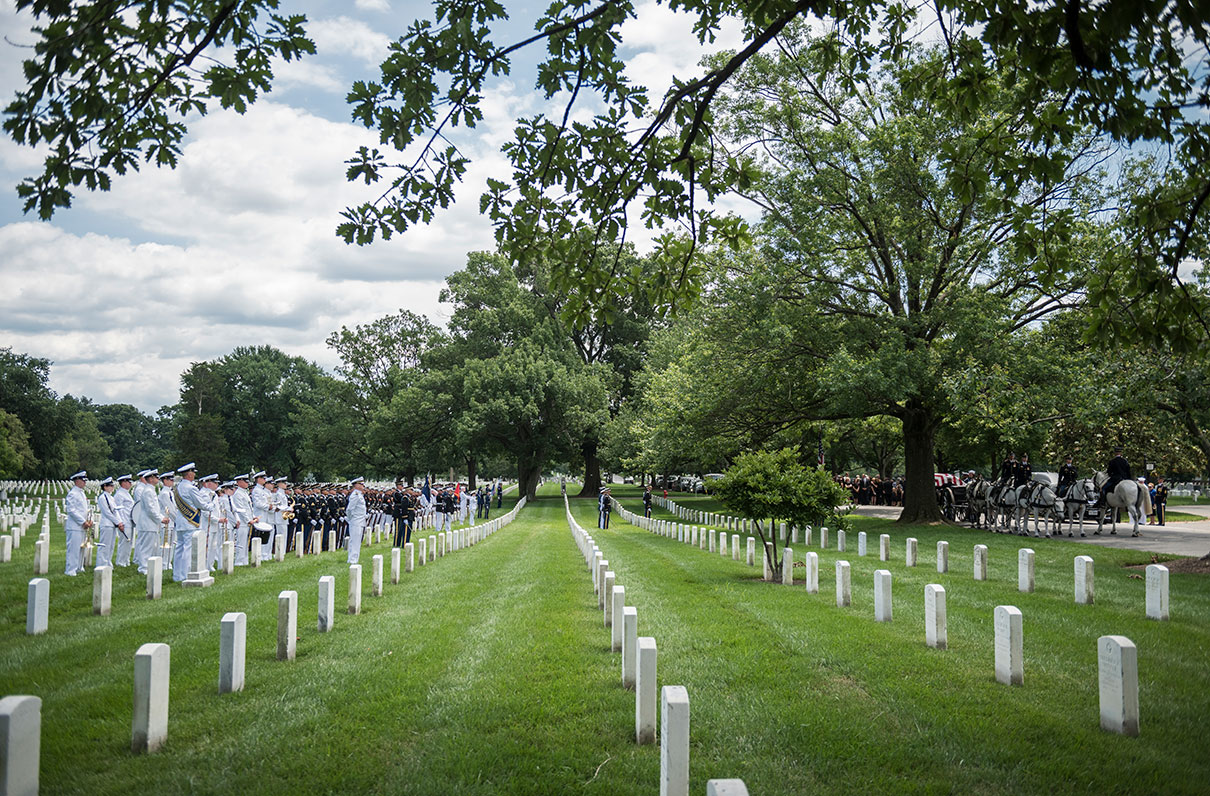The House and Senate have come to terms on dozens of conflicting provisions in the annual defense bill. Arlington National Cemetery, separated from the halls of Congress by the Potomac River, found its way into this year's legislation due to the gradual filling up of burial plots. Only a couple decades worth of unused plots remain at current burial rates.
The FY 2019 National Defense Authorization Act (NDAA) formally directs the Secretary of the Army to take action on this issue. Specifically, the provision in the final bill requires the secretary to make a decision on the criteria for burial so as to preserve Arlington as an active burial ground well into the future by Sept. 30, 2019.
“Well into the future” is taken to mean over 100 years, a long enough time span to cast doubt on any prediction of demand or usage.
While the Secretary of the Army holds governing authority over the cemetery, Congress felt the need to step in to spur action with the idea that the grounds ought to be kept open for new burials many decades into the future. The catch, of course, is that the space is finite, and the only realistic way to keep it as an active cemetery for more than a century is to severely limit eligibility.
Veteran and military service organizations have been part of ongoing discussions surrounding the space and time conflict at Arlington for years. The general consensus remains that disenfranchising the currently eligible population is not the way to go about extending the life of the cemetery. Expansion or reimagining the burial space are more acceptable alternatives.
If eligibility is severely restricted in just over a year, some questions need answering sooner rather than later. Will any currently eligible be grandfathered? Will a certain number of plots be reserved for currently eligible? What sort of assistance will be provided to those who are no longer eligible, other than sending them to VA cemeteries? How will the word be spread to the interested parties? MOAA will be calling on the Advisory Committee on Arlington National Cemetery (ACANC) and cemetery leadership to get that information.
This directive was informed by a survey conducted by the ACANC, which has been studying this issue for a couple of years. Though the final results of the survey are not yet released, an interim update on the response trends suggested restricting eligibility to preserve the active cemetery was preferred by the public. The initial results also suggested a desire to further differentiate eligibility for above-ground and in-ground burials, perhaps as a means to retain retiree eligibility. An astounding 28,000 responses were collected at the time of that update, and the survey remained open for another month.
Unfortunately, a July 26 Advisory Committee meeting was canceled. The final survey results, we presumed, would have been released at that meeting.
While the significant response rate for the survey is meaningful, MOAA remains steadfast with our members' clear preferences on the capacity issue. That is, the currently eligible, and specifically the retiree population, should not be restricted from executing their end of life plans at Arlington.
In more positive news, the legislation also grants the cemetery some small parcels of adjacent land along with funding for developing the land. Though not the long term solution, it is a more palatable way forward. It also directs a coordinated effort between the Secretary of Defense and the FAA to prevent unmanned aircraft, or drones, from disrupting funerals at Arlington.
The defense bill will pass both chambers in the coming weeks, and then the focus will be on Army Secretary Mark Esper and the ACANC recommendations, whose guidance will quell this debate for the time being. Ultimately, no solution is permanent in this conversation. Eligibility expanded and contracted in the past, and space will eventually run out regardless of changes. The coming decisions will help determine when.
